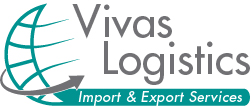The answers to questions below are provided as a guide. If your question is not addressed here please send us an e-mail and we will respond within 24 hours. Alternatively please call us.
Q. What is Freight Forwarding ?
It is a service which may be used by importers and exporters alike. A freight forwarder organizes the safe, efficient, and timely movement of goods. It involves the engagement of various parties e.g. packing consolidators, shipping and/or air lines, road and/or rail transport. The main objective of this service is to provide the best possible handling of goods from source to final destination.
Q. What is a Customs broker ?
Customs Brokers are agents licenced by the Australian Customs and Border Protection Service (ACBPS). Their mission is to assist importers and exporters to execute an efficient and timely cargo clearance. They hold the necessary expertise to deal with Customs and Quarantine issues on behalf of their clients to effectively achieve compliance related to rules, regulations, standards, Customs duty and GST obligations.
Q. How should "free of charge" goods be handled for importation purposes
Be warned: There's not such thing as "free of charge" goods for Customs purposes. Imported items must always be listed in a document that shows their value - this is normally referred to as a "Commercial Invoice". When a free of charge item appears on this document, Customs Authorities will not accept it. Accordingly, even if there is no transaction value, a reasonable market value must be declared. Thus, goods from overseas supplied "free of charge" such as gifts, bonuses, samples, promotional items, warranty replacements, repaired and returned goods must have a reasonable market value provided. With warranty replacement goods, the value of the original goods can be used as the value of the replaced goods. With repaired goods, cost of repair, and cost of the original goods are required.
Have you thought of Quarantine issues? - Please refer to the Question on Quarantine issues below.
Q. How can Quarantine issues be best addressed?
It is a wise move to review Quarantine aspects of what you are planning to import well in advance. There are rules, regulations, and standards that have to be complied with. Achieving compliance after the event can become a complex and expensive exercise. Non-Compliance may result in the goods having to be re-exported or destroyed at your expense. More than an expense consider this as part of your investment strategy - mitigate your risks - apply effective due dilligence.
Q. Are there any extra charges I need to be aware of when I import goods into Australia?
Yes. Suppliers are not likely to mention these costs which in the end will add up to your total importation bill. Importers should be aware of additional costs such as:
- Port charges. These are fees applied by shipping companies to handle your goods when they arrive at the port of destination.
- Import Duty and GST.
- Customs entry and clearance fees.
- Quarantine fees (if applicable).
- Local transport costs to deliver goods to final destination.
- If Customs places a Border Hold on your goods and/or Quarantine authorities decide to unpack/inspect there could be additional costs on retention/storage.
Q. What Duty rates and GST amounts are applicable to importations?
Duty rates apply according to the Customs Tariff Classification the imported goods fall into. Tariff rates have been falling for the last 20 years or so and a large number of commodities are now subject to 5% duty; however textiles, alcohol and tobacco products to mention a few attract higher duty rates. GST on imported goods is normally 10% of the goods value.
Some good advice will contribute to your bottom line as there could be tariff concessions and GST exemptions that may be applicable to your imported goods.
Q. What are the minimum documentation requirements for Customs and Quarantine Clearance?
The most important documents normally required are:
- A Commercial Invoice. This is normally a transactional document with details such as: value of the goods, currency and date of purchase, country of origin (of manufacture), Consignor and Consignee full name and address.
- A Packing List. This document should contain a piece count and a definition or description of the commodities being imported. The document should make reference to the commercial invoice.
- A Bill of Lading for sea freight or an Airway Bill for air freight. This document acts as a receipt for the goods delivered to the Tranportation Provider for shipment and as evidence of title to the relative goods, if "negotiable".
- A Packing Declaration. Quarantine authorities will require this document for seafreight cargo. When timber is used as a packing material it must conform to specific standards which have to be declared. If the Packing Declaration is filled incorrectly or not presented, Quarantine authorities will order an inspection and further measures such as fumigation may take place adding up to your importation costs.
The items listed above are the most important but there are other documents that may be required by Customs and Quarantine authorities depending on the commodities being imported.
